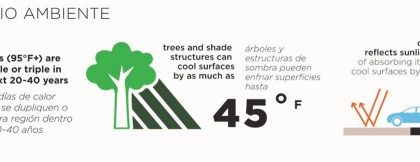We all know that access to safe, comfortable, and convenient active transportation options is good for the environment. Every time a driving trip is replaced with a bicycling or walking trip, our air and water get a little cleaner. Alta’s work of creating healthy, active communities has been helping to reduce emissions from the day we opened our doors. Our designers, planners, and engineers actively consider ways to incorporate strategies for resiliency into our project work. As multiple landmark reports on the climate crisis have hit the headlines recently (like the IPCC special report on the impacts of global warming of 1.5 °C), it has become clear to me and many of my colleagues that our work is urgently needed — and that we need to dig deeper and do more.

The scientific consensus is that avoiding the most catastrophic effects of global heating requires massive emissions reductions over the next decade. Transportation is one of the largest contributors to emissions, making up nearly 30 percent of U.S. greenhouse gas emissions, and it’s also the fastest growing source of emissions. As we face the climate crisis, it’s clear that planning and designing for human-scale mobility is essential to the work of rapidly decarbonizing transportation and coping with a warmed world.

We are ready to rise to the challenge, and we’re starting by asking ourselves some big questions. How can we equip communities to be more resilient to the impacts of the global heating, both the current impacts, and those that are predicted? How can we incorporate the latest projections for regionally-specific changes in rainfall, temperatures, sea levels, and more into our plans and designs? How can we help communities accelerate the shift away from car dependence and reduce the number of miles driven on their streets? And how do we center equity in this work?
In the coming days, my colleagues and I will be delving into these questions, and applying what we learn to our planning and design projects. We’ll also be looking inward at our own business practices to learn how we can reduce our company’s emissions and waste. Please follow along as we share more about what we’re discovering as we face the climate crisis head-on and develop solutions. We’d love to hear about how you and your community are thinking about the climate crisis, too.
Contact Maria Wardoku to see how your community can join us in rising to the challenge of the climate crisis.


